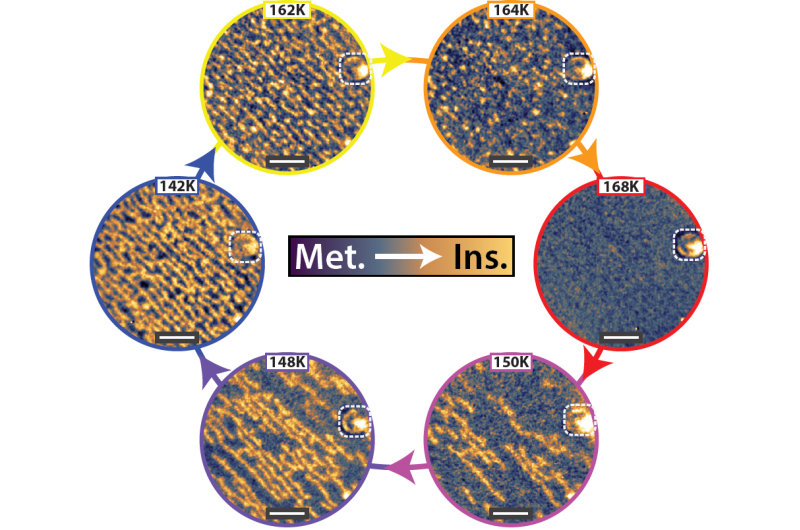Phase transition discovery opens the door to new electronics

A group of European scientists led by researchers at TU Delft has discovered how phase transitions propagate throughout materials called nickelates. The discovery improves our understanding of these novel materials, which can potentially be used in future electronics.
When boiling water, you have likely noticed that bubbles first start to appear around the edges. Phase transitions always originate where the conditions are most favourable, at points called nucleation centres. In the case of the water, the nucleation centres are the edges of the pot. How nucleation centres appear at the nanoscale, however, has been unknown until now.
Giordano Mattoni, a PhD candidate at TU Delft, led a collaboration of scientist from five different European Institutions that aimed to gain a fundamental understanding of how phase transitions propagate in a novel class of solid state materials called nickelates. In the specific type of nickelate that Mattoni and his colleagues researched, the phase transition is dual. When the temperature of the material changes, both the electronic and the magnetic properties of the materials change with it.
The fact that the phase transition is dual in this material was already well known. But until now, it was unclear how the transition occurred and what factors influenced the process at the nanoscale. Using precisely tuned X-ray light as a magnifying tool for their microscopy, Mattoni and his colleagues were able to watch the solid-state transition from the metallic to the insulating state occur in real time. They found that when the material is cooled down, insulating nano-domains gradually start to appear, until the material is covered with tiny, insulating stripes. "Without such a high-resolution microscopy, it would have been impossible to see these domains," Mattoni says.
For their research, Mattoni and colleagues deposited the nickelate thin film on a substrate. The way the material transitioned from metal to insulator, it turns out, was tied to the shape of the substrate surface, which in this case looked like a rice terrace. If the surface had square holes, for example, the domains would have been the shape of squares. "And since we can shape the substrate surface, we can influence the shape of the insulating domains," says Mattoni.
Further research by Mattoni will involve the use of a laser to force the material to switch phase almost instantly. The idea is to have nanostructures in which both magnetism and conductivity can be switched on and off almost instantaneously. Potential future electronics could, for instance, use nickelate structures as light-controlled ultra-fast transistors. In the long run, this discovery may even lead to electronics that mimic neural networks in the human brain.
More information: Mattoni, G. et al. Striped nanoscale phase separation at the metal–insulator transition of heteroepitaxial nickelates. Nat. Commun. 7, 13141 DOI: 10.1038/ncomms13141 (2016)
Provided by Delft University of Technology




















